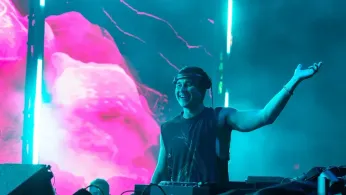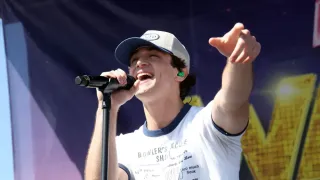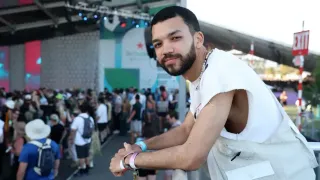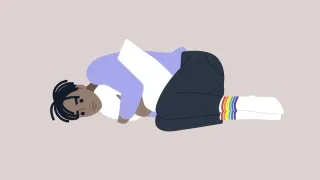
6 hours ago
John Summit’s Shirtless Sizzle: How One Viral DJ Became a Queer Icon in the Age of Gay Twitter
READ TIME: 11 MIN.
When John Summit stepped behind the decks recently—shirt clinging, hair drenched, sweat pouring beneath the lights—he probably didn’t expect to become the internet’s newest queer heartthrob overnight. But the video, originally shared by the X (formerly Twitter) fanpage @MENin4K, tells the story: 4.2 million views in less than 24 hours, a comment section ablaze with thirst, and a tidal wave of memes and gifs reimagining him as the patron saint of “feral gays” everywhere .
The 31-year-old DJ and producer, already known for dancefloor anthems like “Where You Are” and “Shiver,” has long attracted a mix of EDM diehards and queer music lovers. But this viral moment wasn’t just about sweaty skin and strobe lights—it was about the kind of visibility, connection, and playful irreverence that makes queer online culture so unique.
so y’all attending the concert or not 👀 pic.twitter.com/bIpo2ePiPn
— ✰ (@MENin4K) November 13, 2025
If Summit had been content to let the viral wave wash over him, that would have been understandable. Instead, he waded right in, quote-tweeting the viral post and declaring, “I made it on gay twitter hell ya.” Within hours, his reply had racked up millions of additional views and an avalanche of reactions, many hilarious, many heartfelt, all distinctly queer .
Summit’s response matters because, as much as we love a shirtless DJ, what the LGBTQ+ community craves is affirmation. In an era when too many straight, mainstream artists keep their distance from queer fans—often for fear of “culture wars” backlash—Summit’s open embrace is both refreshing and resonant. It’s not just about being welcome in the room. It’s about being celebrated, seen, and even playfully teased, all in good humor and solidarity .
Queer nightlife has always been a crucible for dance music, from the underground clubs of 1970s New York to today’s global festival circuit. But as Out magazine notes, “it’s actually quite rare for mainstream DJs who identify as straight men to feel at ease associating themselves with—and performing at—queer-based parties, queer-centric venues, and Pride Month events” .
Summit’s career, though, bucks that trend. He’s not just tolerating queer fans; he’s courting them, working Pride events, collaborating with LGBTQ+ performers, and showing up authentically on social media. This isn’t performative allyship for PR points, but a genuine connection that shows in every sweaty, joy-filled set. His recent O2 Arena performance in London, a career milestone, saw diverse crowds and a team that included queer dancers and creatives, reflecting the intersectional energy of modern EDM .
If the internet can turn a viral video into a cultural moment, queer Twitter is the engine that drives it. The reaction to Summit’s video was immediate, witty, and unmistakably queer: memes about “feral gays,” lovingly thirsty responses, and a sense of shared ownership that only LGBTQ+ fans can bring to pop culture. Summit’s willingness to engage—without defensiveness or discomfort—elevated the exchange from fleeting viral moment to genuine cultural resonance .
This kind of engagement matters more than ever. As debates rage about the visibility and safety of LGBTQ+ people in nightlife and entertainment, having high-profile allies who not only tolerate but delight in queer attention sends a powerful message: you belong here, your joy is contagious, and your thirst is legendary.
For some, it’s just a hot DJ video. For others, it’s a snapshot of a culture in flux—a reminder that allyship in 2025 is about more than slogans or sponsorships. It’s about showing up, leaning in, and being unafraid to celebrate the delightful messiness of queer fandom. As Summit’s own words—“I made it on gay twitter hell ya”—echo across timelines, the message is clear: dance music is, and always has been, a space for queer joy, expression, and, yes, a little bit of sweat.
In the end, Summit’s viral moment is more than just a shirtless flex. It’s a celebration of the ways LGBTQ+ fans shape, claim, and transform pop culture—and a reminder that the best parties are always the ones where everyone feels welcome to dance.






